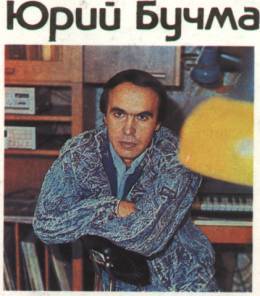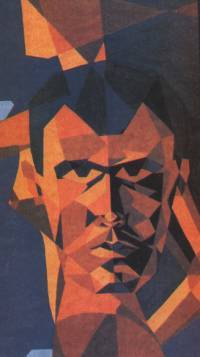THE ELECTRONIC MUSIC
IN EASTER EUROPE
Chapter 3
By: Jorge Munnshe
It is impossible to attempt to compress the musical universe
enclosed behind the iron curtain by decades in a single mini-series. A basic approach to
the reality of the musical avantgardein each one of the multiple, rich cultures of this
great unknown which is Eastern Europe, nowadays in full development, would need the making
of a book. Therefore, this mini-series will only be a brief vision, perforce incomplete,
of these innovative styles sustained on cultures maybe as ancient or even more so than
those in the rest of Europe.
 KALININGRAD
KALININGRAD
Sited between Lithuania and Poland, this state of the ex-USSR is now part of the Russian
Federation. Originally German, the territory was annexed to the USSR at the end of World
War II. Nonetheless, its inhabitants come from everywhere, and therefore the culture of
this region is not exclusively German.
Andrei Kolomitsev is a musician who works on a
regional television channel making 3D computer animations, as well as the music for some
advertising spots. He signs his music as Stirlitz, and uses a computer
and synthesizers. One of these he has used in his musical productions is an old analog of
a Russian make called Polyvox with two voice poliphony. The style of Stirlitz
shows a meaningful fusion of the Russian and German cultures, including as well occasional
voices in Russian and German. With the arrival of democracy, he succeeded in contacting
some foreign journalists, and thus he made his excellent music available to us. Nowadays,
his problem is the same as that of all Western artists: he must compete against the fierce
commercialism of consumer music produced in the bosom of the strongest labels, which often
smothers the most original manifestations of independent labels.
 KAZAJSTAN
KAZAJSTAN
The original ideas by Vadim Ganza, unavoidably disconnected from
almost any influence alien to his country, have led him to developing his own peculiar
style. Thanks to his knowledge as an electronics technician, he succeeded in building his
own recording studio piece by piece, including the multitrack. He composed music for
years, without finding any channels to make his music known. With the dissolution of the
USSR, he managed at long last to get enough freedom of movement to settle in the United
States.
UKRAINE
Yuri Buchma is a well known synthesist supported by the Ukrainian Radio,
whose released music is described as very innovative, both at an artistic and at a
technical level. However, some musicians from other states do not share this opinion, and
think that he has benefited from the Ukrainian official spheres.
 ESTONIA
ESTONIA
Arvo Part was born in Estonia in 1935, received a classical musical
education at the Conservatory in Tallin, and began his career as a composer in the late
1950s. In 1980 he left the USSR and obtained the Austrian nationality, later settling in
Western Berlin. He has written numerous scores of a classical style with innovative
elements, as well as movie soundtracks. He has been given numerous prizes and awards.
The style by Lepo Sumera is oriented towards
dodecaphonism and minimalism, together with other avantgarde elements. To his
musical activity, his task as a producer for Radio Estonia must be added, as well as his
four years as a Secretary of the State For Culture in Estonia.
After having received his musical education in the orthodoxy of the
Conservatory, Erkki Sven Tüür led the rock band In Spe between 1979 and
1983, contributing his avantgarde vision to their music. After that, he devoted himself to
a greater experimental work in his solo compositions.
 Peeter Vähi gathers
in his style the apparent contradiction of fusioning corrents from disparate eras. In his
case, baroque classical music, Eastern music and electronic music are combined to create
meditative pieces, with a strong mystic trait, classifiable within the esoteric trends of
New Age music. Vähi, who is a member of the Buddhist Community in
Estonia, shows in the titles of his works the spirituality he conceives his music with: 1990
Years after the Birth of Christ, for instance.
Peeter Vähi gathers
in his style the apparent contradiction of fusioning corrents from disparate eras. In his
case, baroque classical music, Eastern music and electronic music are combined to create
meditative pieces, with a strong mystic trait, classifiable within the esoteric trends of
New Age music. Vähi, who is a member of the Buddhist Community in
Estonia, shows in the titles of his works the spirituality he conceives his music with: 1990
Years after the Birth of Christ, for instance.
LITHUANIA
The Lithuanian band Argo cultivates a remarkable kind of music, in
which they combine elements of the rock of the 1970s with other futuristic and cosmic
elements, as well as other influences.
Kupriavichus also deserves special attention.
LATVIA
Ingus Bauskenieks has been making electronic music since the early 1980s.
His style is more or less of a Western nature, related to Cosmic Music as well as certain
areas near to Pop.
More difficult to assimilate is that of the band NSRD,
which is defined as a post-modernist one and which incorporates elements of the culture on
his geographical surroundings.
The band Zodiak also turns out to be interesting.
 Previous Page (Articles/News)
Previous Page (Articles/News)
 KALININGRAD
KALININGRAD KAZAJSTAN
KAZAJSTAN ESTONIA
ESTONIA Peeter Vähi gathers
in his style the apparent contradiction of fusioning corrents from disparate eras. In his
case, baroque classical music, Eastern music and electronic music are combined to create
meditative pieces, with a strong mystic trait, classifiable within the esoteric trends of
New Age music. Vähi, who is a member of the Buddhist Community in
Estonia, shows in the titles of his works the spirituality he conceives his music with: 1990
Years after the Birth of Christ, for instance.
Peeter Vähi gathers
in his style the apparent contradiction of fusioning corrents from disparate eras. In his
case, baroque classical music, Eastern music and electronic music are combined to create
meditative pieces, with a strong mystic trait, classifiable within the esoteric trends of
New Age music. Vähi, who is a member of the Buddhist Community in
Estonia, shows in the titles of his works the spirituality he conceives his music with: 1990
Years after the Birth of Christ, for instance.